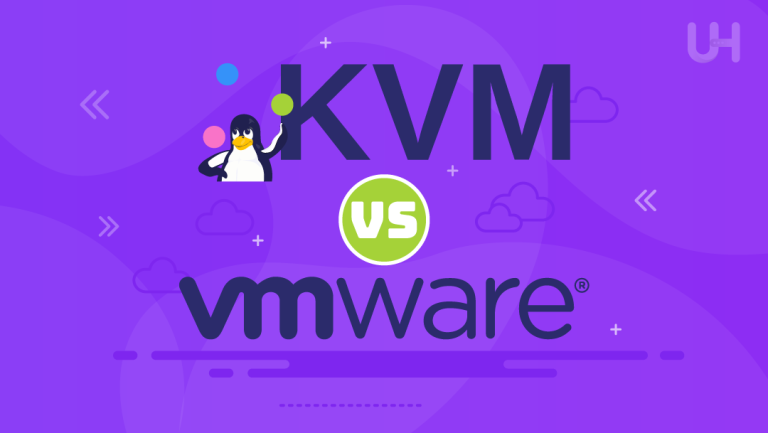The operating system serves as the brain of every computer. It is like a bridge between the machine and the user. A hosting server is a computer designed for a specific purpose, and choosing the right OS impacts its stability, security, and performance, ultimately influencing its overall functionality.
With the growing prominence of cloud-based solutions, it becomes essential to consider two modern Linux distributions that support the increasing significance of cloud computing in today’s IT landscape.
The decision between CloudLinux and AlmaLinux may be influenced not only by the characteristics of the operating system itself but also by its compatibility and ease of integration with cloud solutions. Understanding this context provides a solid foundation for a comprehensive comparative analysis of these two discussed operating systems.
CloudLinux: What Is It and What Are Its Advantages
CloudLinux is an advanced Linux distribution specifically tailored to the needs of hosting servers. It is based on CentOS and fully compatible with its infrastructure. The primary goal of CloudLinux is to enhance isolation between users on shared servers, thereby increasing the stability and security of the hosting infrastructure.
One of the crucial features of CloudLinux is a Lightweight Virtualized Environment (LVE), which allows for resource isolation for individual users on the server. It enables precise control and limitation of resource consumption, critical in hosting environments where multiple websites share server resources. Additionally, CageFS isolates users at the file system level, making it the right OS for virtual server hosting.
CloudLinux provides specially tailored packages and repositories optimized for hosting environments. Administrators can more easily manage server configurations in environments where stability and security are paramount. You can perform Kernel updates without restarting the server, eliminating downtime.
For PHP configurations, CloudLinux offers advanced customization options, allowing individual adjustment of PHP settings for different sites on the server. Furthermore, SecureLinks helps reduce the risk of attacks.
AlmaLinux: A New Alternative to CentOS
AlmaLinux is a Linux distribution created as an alternative to CentOS following changes in CentOS’s strategy by Red Hat. It is free, open-source, and provides stable and long-term support, especially for users in cloud-based hosting environments.
Building upon the principles of CentOS, AlmaLinux operates based on the sources of Red Hat Enterprise Linux, ensuring compatibility with applications and tools optimized for CentOS. Its open nature allows for easy customization and modification according to individual needs.
This distribution offers tailored repositories with packages optimized for hosting environments. It enables straightforward and efficient package management, as well as the installation of tools and applications essential for hosting.
A proactive approach to updates and regular release cycles ensures that the environment remains in line with the latest standards and trends. The extended support period is crucial for hosting environments where stability is a top priority.
AlmaLinux can be easily adapted to the needs of cloud environments, providing support for various virtual machine hosting and container image formats and facilitating integration with cloud infrastructure. It is the right OS for modern cloud hosting and shared hosting solutions.
Comparison of CloudLinux and AlmaLinux
When choosing between CloudLinux and AlmaLinux, the decision should be guided by specific needs, priorities, and the characteristics of the environment in which the system will operate. Consider performance, security, package availability, and the preferred business model.
Performance
CloudLinux relies on LVE technology, allowing precise allocation of resources for each user. It is ideal for hosting environments where there is a need for equitable resource sharing among multiple users.
Create Professional Hosting Server
If you want your server to run smoothly, choose hosting optimized for a modern Linux distribution. With the right configuration, both the hosting server and the operating system work seamlessly, delivering optimal performance. Choose CloudLinux VPS Server Hosting from UltaHost and achieve peak performance limits with full security.
AlmaLinux introduces modern solutions aimed at improving performance compared to traditional CentOS. It is the right OS for projects requiring optimized performance without the overhead associated with user-level resource isolation.
Security
CloudLinux introduces additional security layers, such as CageFS, which protect against attacks at the file system level and provide built-in monitoring mechanisms and protection against DDoS attacks. AlmaLinux emphasizes security by delivering security updates and maintaining the latest industry standards.

Package Availability
Both CloudLinux and AlmaLinux provide access to packages optimized for hosting environments and support a range of packages and tools available in the RHEL ecosystem.
Community Support
Both solutions have strong community support and receive regular updates as they have emerged from former CentOS. However, this doesn’t mean there are no differences between them. CloudLinux is a distribution tailored for fast virtual hosting environments, so the community provides more detailed and specialized support regarding server administration.
AlmaLinux, as a new alternative to CentOS, is more general, but the community is much larger. Active forums, discussion groups, and community involvement ensure responses to current questions and issues, although more complex matters may be harder to resolve.
Business Model
CloudLinux operates on a subscription basis, with various access levels depending on the client’s needs. It introduces additional services, such as KernelCare, available on a paid model. In contrast, AlmaLinux is an open-source solution available for free.
Usage Scenarios
To better understand which operating system – CloudLinux or AlmaLinux – is the right OS for a specific situation, it’s worth examining various usage scenarios where the specific characteristics of each distribution can significantly impact server efficiency.
Web Hosting
CloudLinux is perfect for hosting companies managing multiple websites on a single server. With LVE technology, precise resource allocation for individual users is possible, securing the server from the impact of one client on the rest. Therefore, it’s an excellent solution for virtual dedicated servers or virtual private servers.
AlmaLinux is well-suited for environments where optimized server performance is desired, but user-level resource isolation is not necessarily required. It is a solution applicable to shared hosting or dedicated servers.
Security for Business Applications
In situations where application security is crucial, choosing CloudLinux is preferable. Features like CageFS isolate users at the file system level, making VPS hosting exceptionally secure. Even companies handling sensitive data and requiring additional security layers can opt for affordable VPS hosting instead of a dedicated server.
If security is important, but file system-level resource isolation is not critical, you can choose CloudLinux.
Financial Industry and Regulated Environments
In this scenario, opting for CloudLinux is undoubtedly the better choice. It is the right OS for companies that must comply with stringent data security regulations and prioritize reliability and stability. AlmaLinux is a more cost-sensitive solution, suitable for companies that don’t necessarily need all the advanced features of CloudLinux. For businesses requiring robust support in managing and optimizing their data infrastructure, seeking Data Warehousing Consulting can further enhance their IT strategy.
Conclusion
Both CloudLinux and AlmaLinux are distributions that can be successfully applied to modern hosting servers. CloudLinux is a more specialized distribution designed for server tasks, excelling in virtualization as an advanced server solution.
On the other hand, AlmaLinux is a more popular and versatile distribution, somewhat succeeding CentOS, ensuring a broader and more universal knowledge base within the community. CloudLinux may be slightly more expensive to maintain, as it operates on a subscription model, while AlmaLinux is a simpler and more cost-effective solution, evident from being open source and free itself.
Therefore, if your priority is to ensure the highest security or performance for your hosting, choose CloudLinux. If you are a user with less experience and are looking for a versatile distribution, AlmaLinux is a better fit. The choice depends on individual priorities, business preferences, and specific server applications.
You need to choose something more powerful than virtual hosting? We have prepared a Fully Managed Dedicated Server for you! Our robust Linux security features and secure FTP access guarantee you full protection from threats. Our expert team handles server management, ensuring optimal performance and security for your dedicated server. Let us demonstrate the difference!
FAQ
What is the main purpose of CloudLinux and AlmaLinux?
Both CloudLinux and AlmaLinux are Linux distributions designed for hosting servers. CloudLinux focuses on enhancing isolation between users on shared servers, while AlmaLinux serves as an alternative to CentOS, providing stable and long-term support, especially for users in cloud-based hosting environments.
How does CloudLinux ensure resource isolation?
CloudLinux achieves resource isolation through its Lightweight Virtualized Environment (LVE) technology, allowing precise allocation of resources for individual users on the server. This ensures equitable resource sharing among multiple users, enhancing stability and security in hosting environments.
What are the security features introduced by CloudLinux?
CloudLinux introduces additional security layers, such as CageFS, which protects against attacks at the file system level. It also provides built-in monitoring mechanisms and protection against Distributed Denial of Service (DDoS) attacks. These features contribute to a secure hosting environment, especially in virtual private server (VPS) hosting.
What are the differences between the community support?
Both CloudLinux and AlmaLinux receive strong community support and regular updates. However, CloudLinux, being tailored for fast virtual hosting environments, has a community that provides more detailed and specialized support regarding server administration. AlmaLinux, as a new alternative to CentOS, has a larger and more general community, ensuring responses to common questions but may face challenges with more complex issues.












